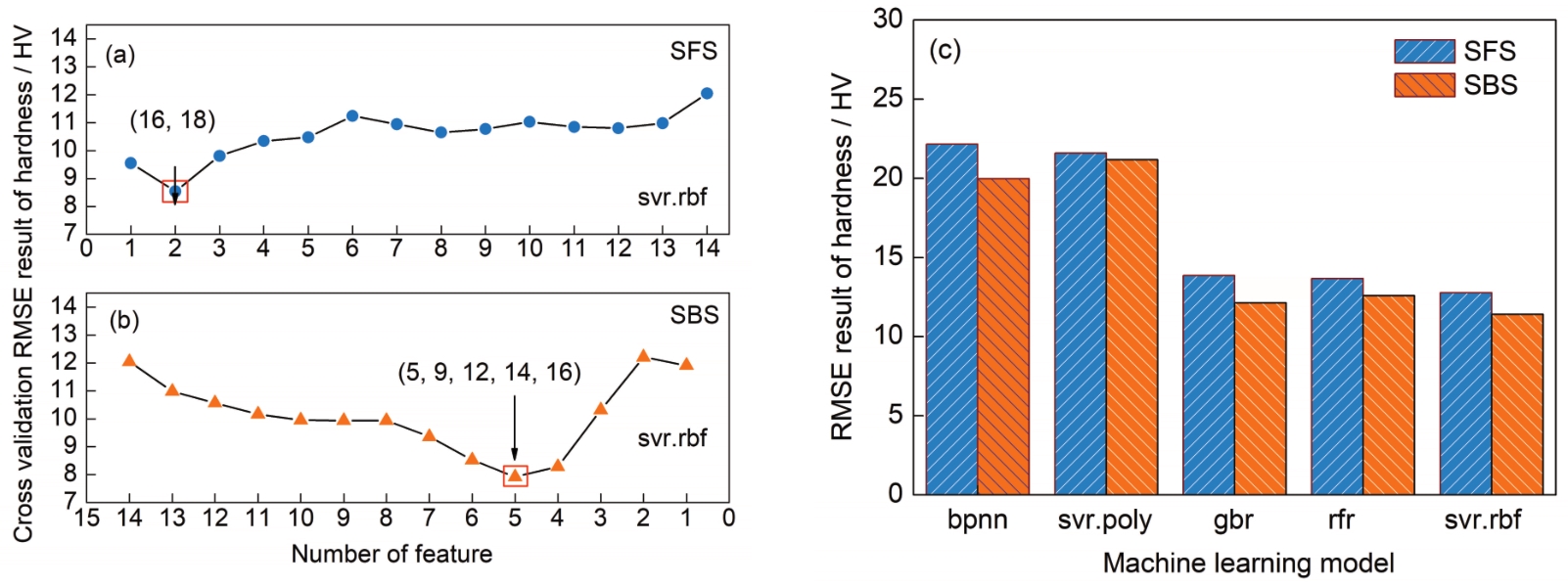基于Bayesian采样主动机器学习模型的6061铝合金成分精细优化
Composition Refinement of 6061 Aluminum Alloy Using Active Machine Learning Model Based on Bayesian Optimization Sampling
(a) subset building results of SFS (RMSE—root mean square error, svr.rbf—radial basis function support vector regression)
(b) subset filtering results of SBS
(c) comparisons of modeling results between the two feature subsets (bpnn—back propagation neural network, svr.poly—polynomial kernel functions for support vector regression, gbr—gradient boosted regression, rfr—random forest regression)
